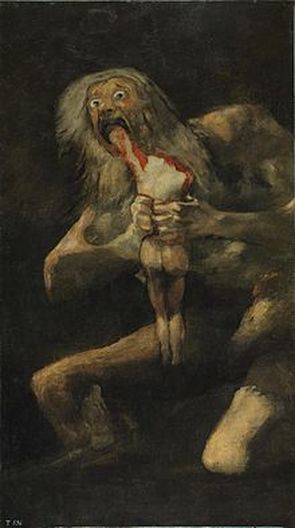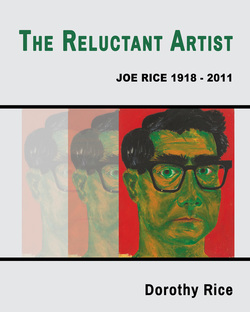 Las Meninas, Diego Velasquez 1656
Las Meninas, Diego Velasquez 1656 I returned to Spain this past summer after nearly 40 years, with an image in my mind of the Prado Museum, of the Spanish masters hanging there. I remembered seeing them for the first time in 1978, the almost overpowering emotion at the physical truth of paintings that had resided in my subconscious, in my imagination, since childhood, seen only in books and magazines.
Why is it that some art has this power? It's a complex brew, I imagine. Earliest memories of the art itself, what one learns and absorbs about the artists and their lives, and, for me, my father having been a painter and lifelong student of the arts and remembering the precious times when he talked to me about art and transmitted his sense of awe, of respect, admiration and love. Sitting beside him while he turned the pages in his big, glossy art books, pointing out the ones that he admired the most, telling me why.
"The Spaniards were some of the best," he would say, "Under appreciated. No one better than Velasquez or Zurburan." Their names aren't household words, not in the way that those of many other artists are. Leonardo da Vinci, Michelangelo, the Flemish masters, the French impressionists, Picasso of course and Dali.
Standing in that massive room dedicated to the Velasquez portraits of the royal family. Las Meninas, the pampered little princess, surrounded by her ladies in waiting, the painter himself appearing in the background, both painting the scene and a part of it, observer and participant. And managing to do more than simply depict in astounding detail and vibrancy the sense of who these people were, but also, and this I think is the hardest part, to provide in a sense a social commentary as well, a historical record of life at court and the artist's place in that world in a subtle, almost subversive way.
One experiences these massive canvasses on a visceral level. Hundreds of years old, their subjects long dead, yet alive in that room, the eyes still searching, seeking, communicating what it was to have been. Thanks to the artist who captured them and himself for relative eternity. My emotions at seeing these paintings again, standing before them, were an indecipherable mix of memories of moments, rare conversations or even silent observance with my father. Those rare conversations where he was speaking from the realm with which he was familiar, and more comfortable than in the realm of family and social interaction. He would talk about art, about history and ideas and we weren't father and daughter, but rather two people having a conversation. Regardless my age.
Why is it that some art has this power? It's a complex brew, I imagine. Earliest memories of the art itself, what one learns and absorbs about the artists and their lives, and, for me, my father having been a painter and lifelong student of the arts and remembering the precious times when he talked to me about art and transmitted his sense of awe, of respect, admiration and love. Sitting beside him while he turned the pages in his big, glossy art books, pointing out the ones that he admired the most, telling me why.
"The Spaniards were some of the best," he would say, "Under appreciated. No one better than Velasquez or Zurburan." Their names aren't household words, not in the way that those of many other artists are. Leonardo da Vinci, Michelangelo, the Flemish masters, the French impressionists, Picasso of course and Dali.
Standing in that massive room dedicated to the Velasquez portraits of the royal family. Las Meninas, the pampered little princess, surrounded by her ladies in waiting, the painter himself appearing in the background, both painting the scene and a part of it, observer and participant. And managing to do more than simply depict in astounding detail and vibrancy the sense of who these people were, but also, and this I think is the hardest part, to provide in a sense a social commentary as well, a historical record of life at court and the artist's place in that world in a subtle, almost subversive way.
One experiences these massive canvasses on a visceral level. Hundreds of years old, their subjects long dead, yet alive in that room, the eyes still searching, seeking, communicating what it was to have been. Thanks to the artist who captured them and himself for relative eternity. My emotions at seeing these paintings again, standing before them, were an indecipherable mix of memories of moments, rare conversations or even silent observance with my father. Those rare conversations where he was speaking from the realm with which he was familiar, and more comfortable than in the realm of family and social interaction. He would talk about art, about history and ideas and we weren't father and daughter, but rather two people having a conversation. Regardless my age.
 Goya, Saturn Devouring his Son 1819-1823
Goya, Saturn Devouring his Son 1819-1823 The Goya, Saturn Devouring His Son. It's there in the Prado as well.
"It's awful, isn't it," my father once said, "Horrifying really. Yet there's nothing else like it. You see it and can't forget." With awe and reverence in his voice, for the artist who did something others hadn't done, who took risks and followed a vision, albeit horrific.
Picasso and El Greco, Dali and Juan Gris, Juan Miro. It is because of my father that I recognize their subjects, colors, lines, their style. I walked through the Prado and experienced flashes of recognition, of memory. I told my daughter the artist's names without reading the labels first and then checked to find I was right. In that recognition, I experienced a deep sense of satisfaction and connection with my father, with the many ways in which he shaped my artistic sensibilities.
Perhaps I would have come to know and appreciate these painters anyway, without my father to show me that I should. Perhaps. Certainly, that history deepens the experience. Adds to the reason why some paintings bring tears to my eyes for reasons too complex to name. They connect me with something so much bigger than myself. The past, the collective human experience, childhood, the things that pass down.
Inheritance.
And on the topic of inheritance more generally, here is a recent essay of mine in Issue 14 of Proximity: A Quarterly Collection of True Stories, one of nine essays on the topic of "Inheritance." Tianjin Daughter is about my father's mother, Esther, born in China in 1898.
Enjoy.
"It's awful, isn't it," my father once said, "Horrifying really. Yet there's nothing else like it. You see it and can't forget." With awe and reverence in his voice, for the artist who did something others hadn't done, who took risks and followed a vision, albeit horrific.
Picasso and El Greco, Dali and Juan Gris, Juan Miro. It is because of my father that I recognize their subjects, colors, lines, their style. I walked through the Prado and experienced flashes of recognition, of memory. I told my daughter the artist's names without reading the labels first and then checked to find I was right. In that recognition, I experienced a deep sense of satisfaction and connection with my father, with the many ways in which he shaped my artistic sensibilities.
Perhaps I would have come to know and appreciate these painters anyway, without my father to show me that I should. Perhaps. Certainly, that history deepens the experience. Adds to the reason why some paintings bring tears to my eyes for reasons too complex to name. They connect me with something so much bigger than myself. The past, the collective human experience, childhood, the things that pass down.
Inheritance.
And on the topic of inheritance more generally, here is a recent essay of mine in Issue 14 of Proximity: A Quarterly Collection of True Stories, one of nine essays on the topic of "Inheritance." Tianjin Daughter is about my father's mother, Esther, born in China in 1898.
Enjoy.

 RSS Feed
RSS Feed
